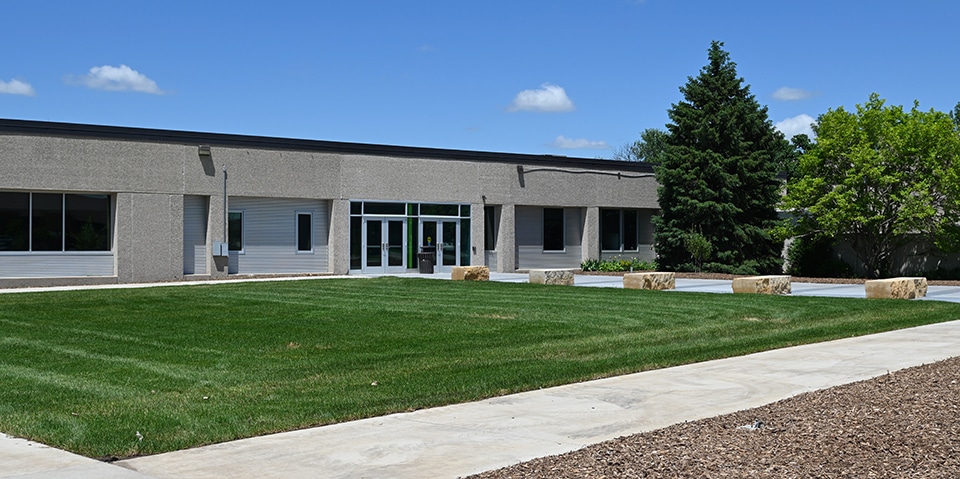History
In the 1970s, the MCC administration was getting ready to build the new District VI Community College just south of Marshalltown. On September 4th, 1970 members of the Biology department sent a letter to the Administrative Board requesting a field laboratory be included in the development of the new school. They requested the Southeast 40-acres of the new campus to be dedicated to a new outdoor laboratory to be used for the “study and the research of the MCC biology students and faculty.” This project was approved and the area was named: “Biology Outdoor Learning Laboratory.”
Their vision came to fruition in the mid- 1980s with the building of a dam on the creek running through the 100-acre campus and excavation of a 15’ deep pond on the Southeast side of campus. By 1986, the pond was settled and was stocked with fish from a local fishery thanks to Marshall County Conservation. In April of 1984, 141 trees were planted on 3.5 acres of land near the pond but this area was later expanded. Over the next few years, the MCC staff and faculty developed a prairie, actively planting native prairie seeds in 1988 and again 1990. There was a recreation area on the north side of the pond.
In the 2000’s, Biology faculty worked with a state program called Working Watersheds: Buffers and Beyond, securing funding to build buffer zones around the pond. During this time, 1,200 tree seedlings were planted around the pond and the remaining 40 acres of land in the Biology Outdoor Learning Laboratory. The labor to take on this monumental task was donated by the local Boy Scout Troop and their parents, taking 70 hours over the course of June 2007. A plaque honoring their contribution once stood at the main opening of the forest pathway.
Today
Time and erosion have led to significant changes in the nature preserve. The Derecho of 2020 left the area heavily damaged. Today, MCC staff and faculty are hoping to restore this area to its original vision. Starting 2024, work will be done to remove invasive plants and repair erosion along the banks. New sedges will be planted to restore wetlands in the drainage areas. Next steps in the project will include restoring balance to the pond ecosystem, using fire to control invasive plants in the prairie and adding in more opportunities for education and recreation for both students and visitors. Looking to the future, additional efforts will focus on forest restoration. Throughout the project, wildlife preservation will be a key focus. During the next few years, the trails may close to allow work in the area. The goal is to minimize visitor and student inconvenience, knowing that in the end it will be worth it!


